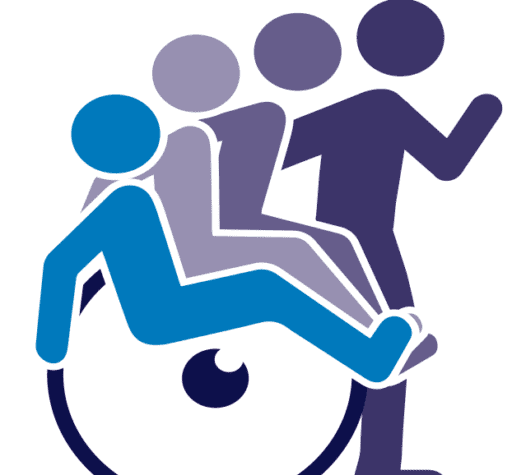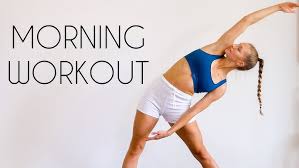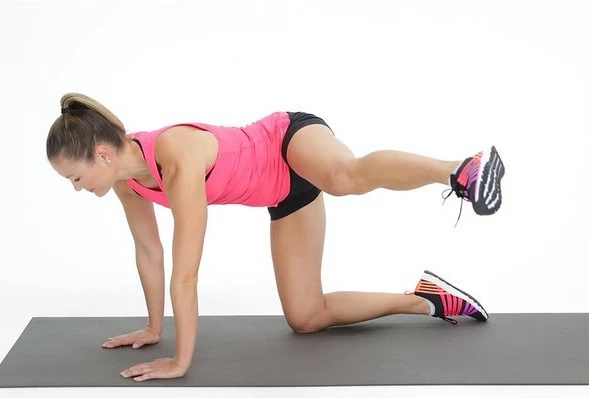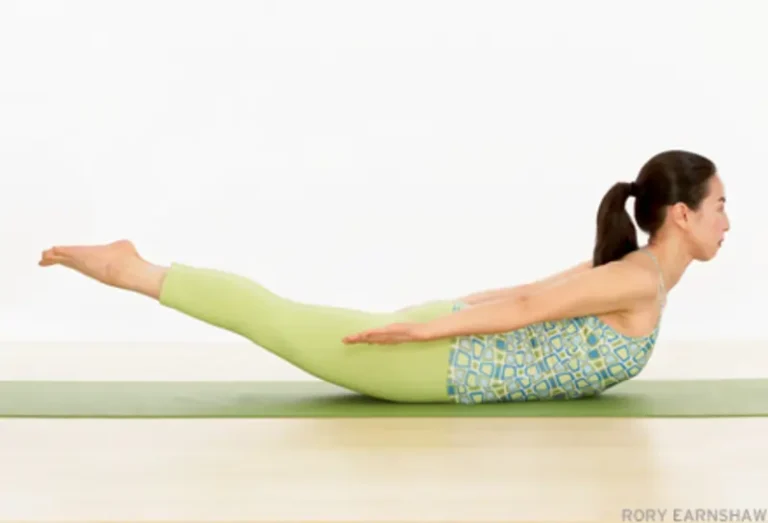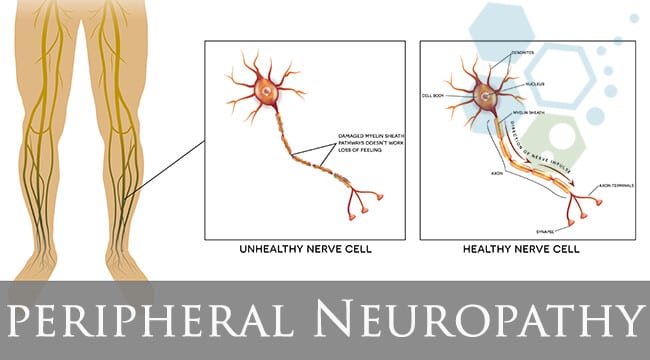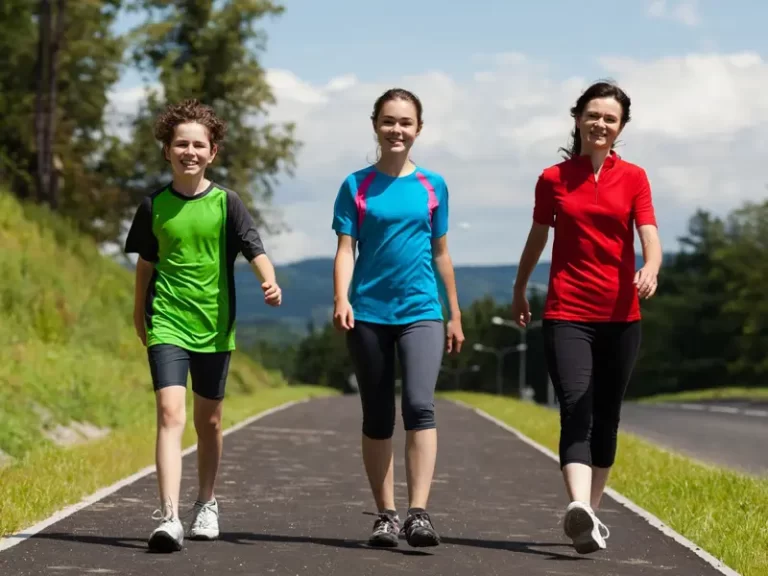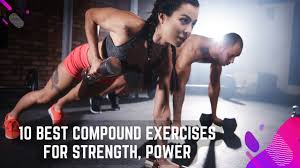Morning Workout Routine at Home
Table of Contents
Introduction:
One of the best methods to increase energy, elevate your mood, and improve your general health is to begin your day with a morning workout at home. Without a gym membership or expensive equipment, working out at home provides comfort, flexibility, and convenience, which makes it simpler to maintain consistency.
Stretching, aerobic, and strength-training activities may all be incorporated into a well-thought-out morning routine to help you energize and focus for the day. Regardless of your level of experience, even 20 to 30 minutes a day of physical activity can have a significant impact on your mental and physical health.
Morning Workout Routine at Home:
Bridge:
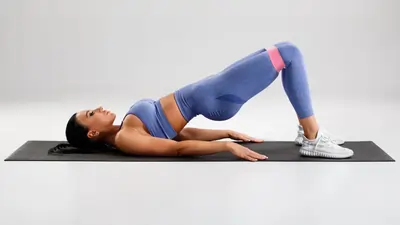
The Bridge is a straightforward but effective exercise that works the core, hamstrings, lower back, and glutes. It’s a great exercise to increase hip mobility, strengthen the posterior chain, and ease lower back pain. At the peak, hold the position for a few seconds before lowering yourself back down gradually. Because it softly activates the body and gets it ready for the day, this motion is ideal for morning workouts.
Squats:
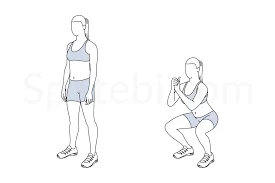
Squats are a basic bodyweight exercise that increases flexibility and balance while strengthening the legs, glutes, and core. Squats help stimulate major muscle groups and get your blood flowing early in the day, making them perfect for a morning workout at home.
Stand with your feet shoulder-width apart, maintain a straight back, and lower your hips as though you were reclining on a chair to execute a squat. To get back to standing, push through your heels after lowering yourself as much as is comfortable while maintaining knee-to-toe alignment. Squats improve general functional fitness, increase metabolism, and strengthen the lower body.
Push-up:
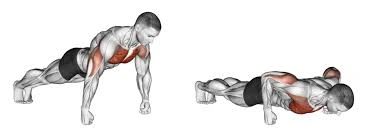
A traditional upper-body workout that tones the core, triceps, shoulders, and chest is the push-up. Because they don’t require any equipment and use only your body weight to effectively increase strength, they’re a wonderful complement to a morning training regimen at home. Bend your elbows to bring your chest down toward the floor, then push yourself back up to the beginning position. Push-ups give you a stronger, more energized start to the day by improving core stability and endurance in addition to upper-body strength.
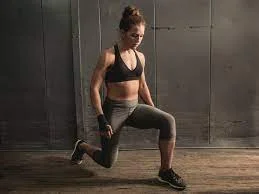
An effective lower-body workout that works the quadriceps, hamstrings, glutes, and calves is the lunge. They are a great option for a morning workout at home because they also enhance balance, coordination, and core stability. Maintain your back knee slightly above the floor and your front knee over your ankle. Then, switch legs. Early in the day, lunges aid in the activation of big muscle groups, which increases energy and circulation.
Bird Dog:
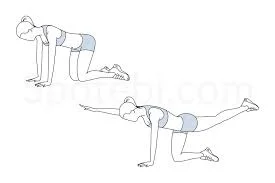
A mild yet powerful core and stability workout, the Bird Dog also works the shoulders, glutes, and lower back. It enhances balance and coordination while activating important postural muscles, making it a perfect complement to a morning workout at home. After a brief period of holding, switch sides and go back to the beginning position. This deliberate motion improves spinal alignment, fortifies the core, and gets the body ready for everyday tasks.
Side-lying hip abduction:
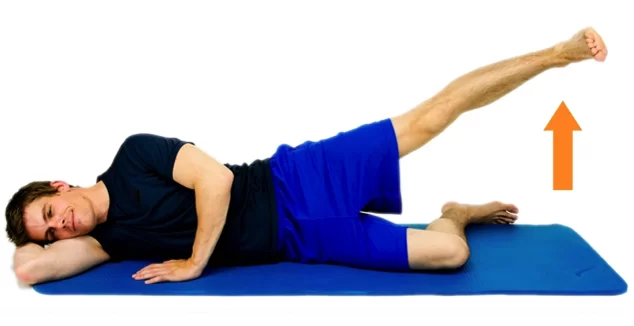
A specific lower-body exercise that tones the hip abductors, especially the gluteus medius, is side-lying hip abduction. It’s a fantastic option for a morning workout at home because it’s particularly helpful for enhancing hip stability, balance, and lower-body alignment. With your head resting on your arm, contract your core, and raise your upper leg gradually without turning your hips. At the peak, pause, then carefully lower the leg back down. This exercise promotes good posture, helps engage underused glute muscles, and lowers the risk of knee and hip pain.
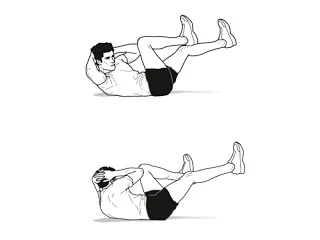
A dynamic abdominal workout that works the rectus abdominis (front abs) and obliques (side abs) is the bicycle crunch. Because it works the core hard and improves flexibility and coordination, it’s a great supplement to a morning workout at home. Maintain a strong core and controlled motion. This workout helps strengthen the core, reduce the waist, and provide the body with the energy it needs to start the day off right.
Superman:
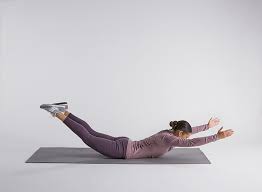
To combat the consequences of prolonged sitting or bad posture, it’s particularly helpful during a morning workout at home. The posterior chain is strengthened, and your back is ready for the day’s activities with this easy yet effective exercise.
Dead bug:
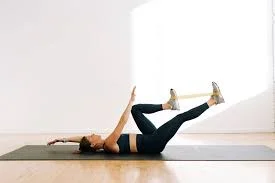
A great core stability exercise that works the deep abdominal muscles and puts the least amount of tension on the lower back is the Dead Bug. Because it softly engages the core, enhances spinal alignment, and improves coordination, it’s a terrific option for a morning workout at home. Maintaining a flat back on the floor, slowly descend your left leg and right arm toward the floor. Proper core engagement and injury-free strength gain depend on controlled movements.
Jumping Jack:
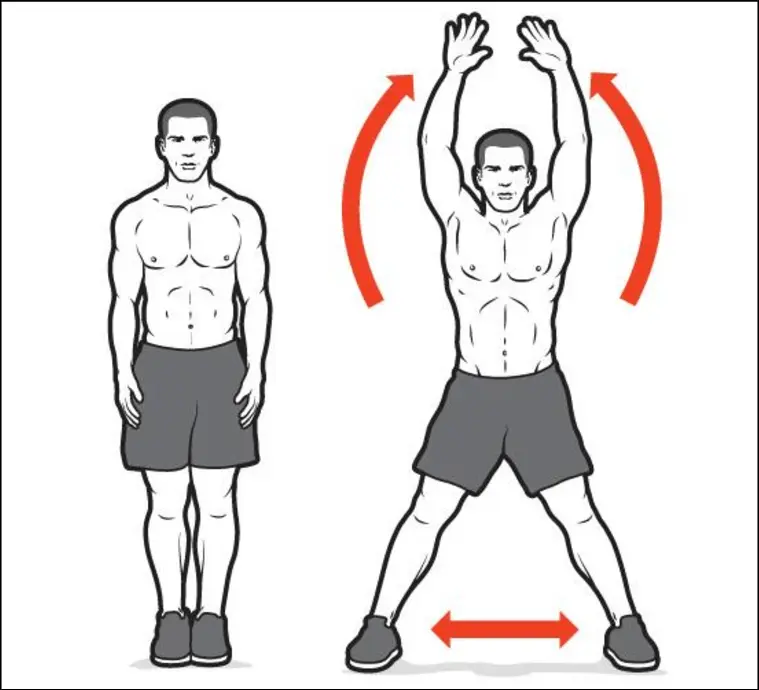
A traditional full-body aerobic workout that efficiently raises heart rate, burns calories, and warms up muscles is the jumping jack. Ideal for a morning workout at home, they help revitalize the body for the day and don’t require any special equipment. To begin a jumping jack, stand up straight, place your feet together, and keep your arms by your sides. Raise your arms high and jump your feet out to the sides at the same time. Then, leap back to where you were before. This repetitive, rhythmic exercise improves circulation, coordination, and cardiovascular endurance, making it a great method to get your morning started with vigor and concentration.
Walking:
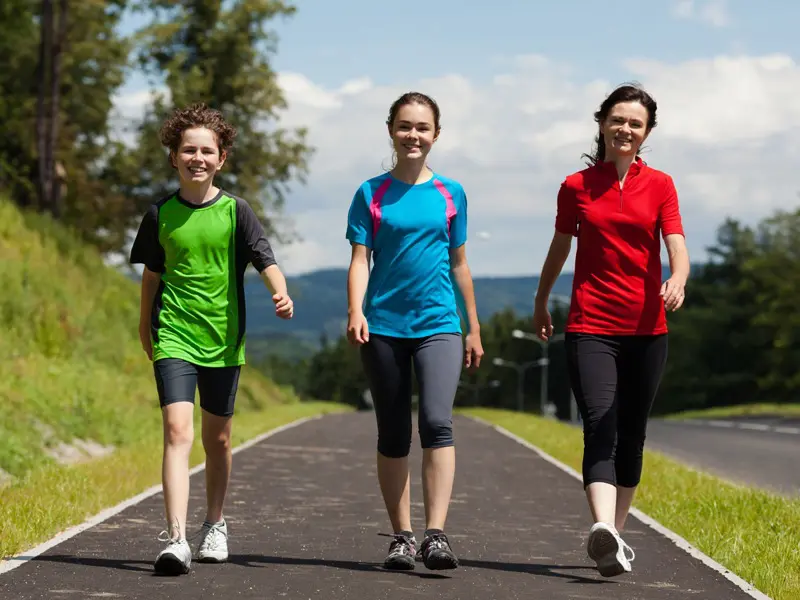
It aids weight control, strengthens bones and muscles, improves cardiovascular health, and improves mental health by lowering stress and anxiety. Regular walking also improves sleep quality, increases vitality, and reduces the risk of chronic diseases like high blood pressure, diabetes, and heart disease. Walking is an accessible and sustainable technique to maintain general health and wellness because it is appropriate for all age groups and fitness levels, doesn’t require any particular equipment, and can be done anywhere.
Jogging:
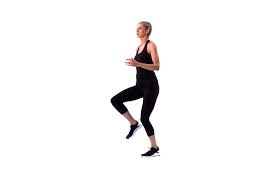
There are several mental and physical health advantages to jogging, a moderate-intensity aerobic activity. By efficiently burning calories, it enhances cardiovascular endurance, builds muscle, particularly in the legs and core, and aids in weight management. Frequent jogging increases metabolism, expands lung capacity, and releases endorphins, which improve mood and sleep. Additionally, it lowers the chance of developing long-term conditions like diabetes, high blood pressure, and heart disease. Jogging is an easy and effective way to maintain a healthy lifestyle and increase general fitness, whether it is done outside or on a treadmill.
Burpee:
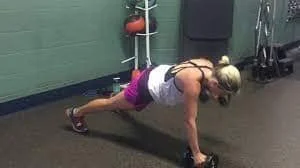
A full-body, high-intensity workout that blends cardio and strength training, the burpee is a great way to increase overall fitness, burn fat, and improve endurance. The squat, plank, push-up, and jump are a series of exercises that work the arms, legs, core, glutes, and chest, among other muscular groups. Even though they are difficult, they are perfect for at-home workouts or HIIT routines because they don’t require any special equipment and can be done anywhere. Frequent burpee practice increases muscular strength and power, enhances coordination, and speeds up metabolism.
Cat Cow pose:
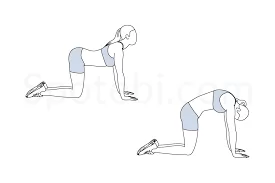
The Cat-Cow posture is a soft, flowing yoga pose that warms and extends the spine, which makes it perfect for reducing stress and increasing shoulder, neck, and back flexibility. It includes shifting between two postures, Cow (lowering the belly and raising the head) and Cat (arching the spine upward), all while maintaining deep, deliberate breathing. In addition to improving posture and spinal mobility, this pose stimulates the abdominal organs, which facilitates digestion. Beginners can safely incorporate it into their morning routine or cooldown stretch, and it’s particularly helpful for people with lower back pain or sedentary lifestyles.
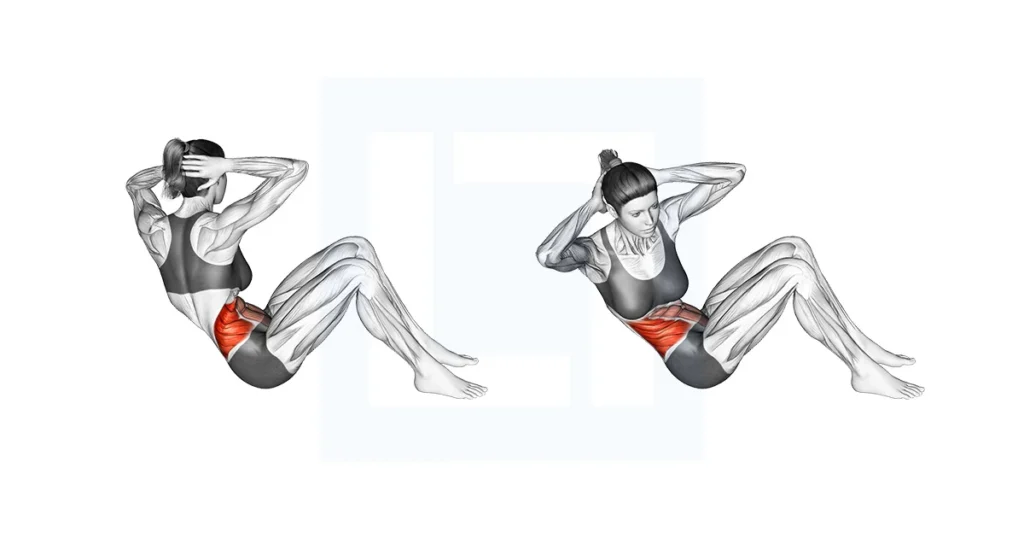
A core-strengthening exercise that works the obliques, abs, and lower back is the Russian Twist. The exercise includes twisting the torso from side to side while sitting with the feet raised or grounded and the torso slightly pushed back. For extra resistance, the torso is frequently held with a weight or medicine ball. By using the entire core, this circular motion enhances stability, balance, and muscle definition. An excellent exercise for strengthening the core and improving functional movements involving twisting or turning is the Russian Twist. It may be adjusted for all fitness levels and is frequently incorporated into ab and full-body exercises.
Sit-ups:

It includes using your core power to raise your upper body toward your knees and then lowering it back down with control. Sit-ups improve posture, increase muscular endurance, and strengthen the core. They can also activate the lower back and hip flexors when performed properly. They perform well, but using the right technique is essential to prevent back or neck pain. For a more well-rounded abdominal workout, they are sometimes paired with other core exercises.
Yoga:
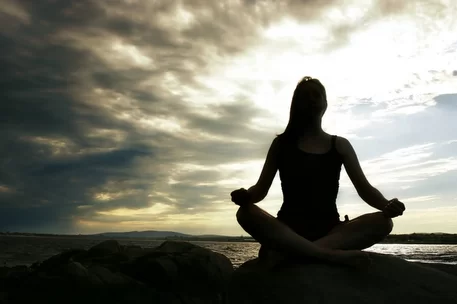
Yoga is a comprehensive practice that enhances general health and well-being by integrating physical postures, breathing exercises, and meditation. It supports mental clarity and emotional calmness while improving posture, strength, flexibility, and balance. Frequent yoga practice helps strengthen the neurological system, increase circulation, enhance respiratory health, and lower stress. Yoga is suitable for people of all ages and fitness levels since it comes in a variety of styles, from gentle and restorative to more dynamic and strength-focused. Beyond its physical advantages, yoga promotes inner tranquility, bodily awareness, and mindfulness, making it an effective tool for mental and physical health.
High Knees:
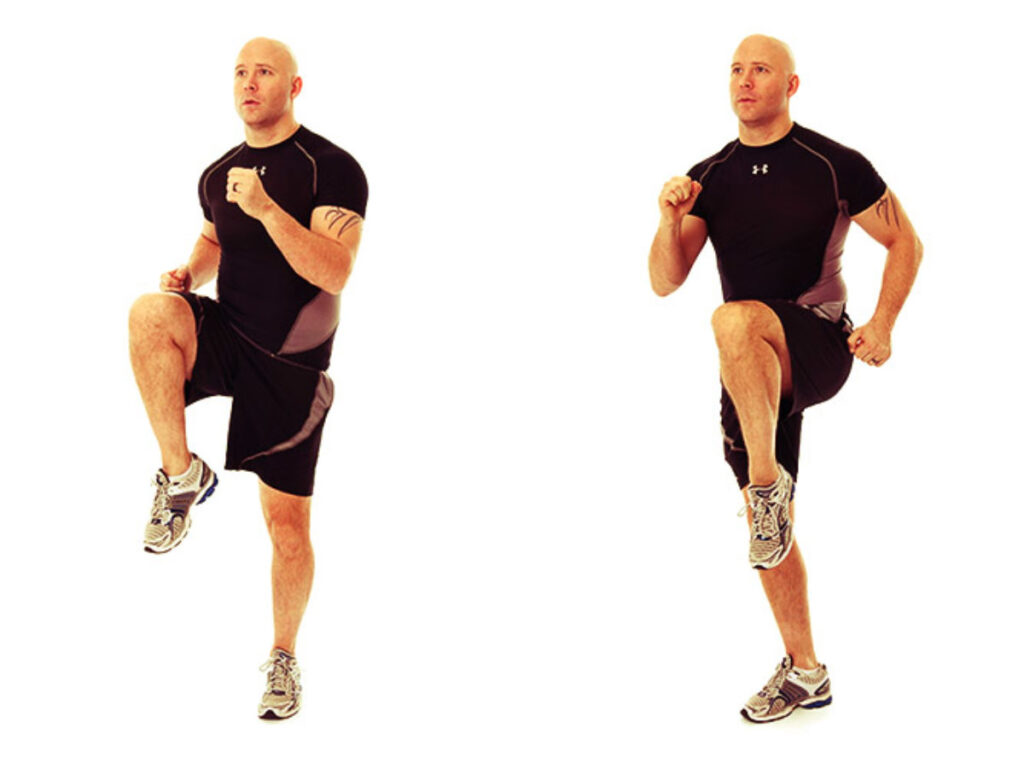
Running in place while raising the knees as high as you can toward the chest is known as “high knees,” and it’s a dynamic cardiovascular workout. This high-intensity exercise is great for warming up or adding to a cardio or HIIT routine because it works the core, strengthens the legs, enhances coordination, and increases heart rate.
It is a straightforward but efficient full-body exercise that is perfect for at-home exercises because it doesn’t require any special equipment and can be done anywhere.
Mountain Climbers:
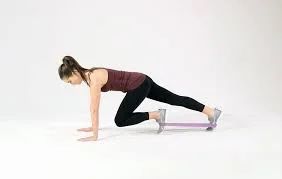
In a plank position, Mountain Climbers are a full-body, high-intensity workout that simulates the motion of ascending a mountain. This dynamic exercise is good for cardiovascular fitness and strength-building because it works several muscular groups, such as the legs, shoulders, chest, and core, while also raising heart rate. Mountain Climbers enhance coordination, agility, and endurance by rapidly moving the knees toward the chest in a running motion. Without the use of any equipment, they are perfect for increasing core stability, burning calories, and incorporating into bodyweight or HIIT exercises.
Leg Raises:
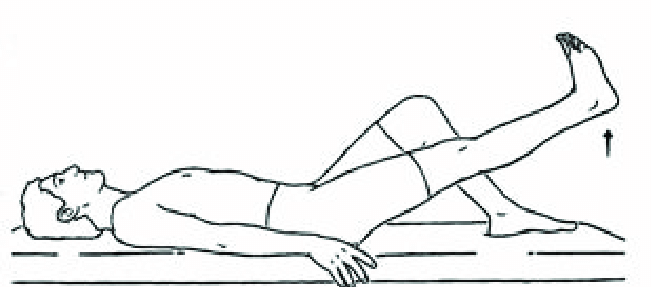
An effective core-strengthening exercise that focuses mostly on the lower abdominal muscles is the leg raise. This exercise, which involves lying flat on your back and raising your legs to a vertical position, strengthens your hip flexors and enhances your control of your lower body. Leg raises contribute to a stronger, more defined midsection, improved posture, and increased core stability. They are a fantastic addition to at-home workouts, particularly for those who are concentrating on abdominal strength and endurance, because they can be performed without the use of equipment and are readily adjusted for varying fitness levels.
Side Plank:
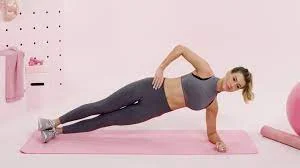
An effective bodyweight exercise that works the obliques as well as the shoulders, core, and glutes is the side plank. It strengthens the core and enhances posture and balance by having the person balance on one forearm and the side of the foot while maintaining a straight body. The Side Plank, in contrast to typical planks, places an emphasis on lateral strength, which helps to strengthen the muscles supporting the spine and tone the waist. This exercise is a fantastic complement to any core or full-body workout regimen and is appropriate for all fitness levels.
Wall Sit:
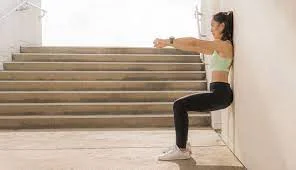
It tests muscle endurance and develops strength without needing movement. Maintaining this posture enhances muscular endurance, balance, and posture while activating the core for stability. Wall sits are easy to perform at home without any special equipment and are appropriate for most fitness levels due to their low impact. They are frequently utilized in physical rehabilitation exercises, warm-ups, and strength training.
Marching in Place:
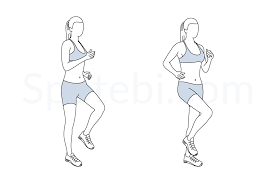
Marching in Place is a low-impact aerobic workout that simulates walking or marching by having you swing your arms and raise your knees alternately. It is an excellent warm-up or light cardio choice for people of all fitness levels because it enhances heart rate, circulation, and coordination. This easy exercise improves balance, strengthens the legs, and works the core without straining the joints. Marching in Place is a great method to keep active, burn calories, and increase energy levels throughout the day. It’s perfect for at-home workouts, especially in cramped areas.
Child’s Pose:
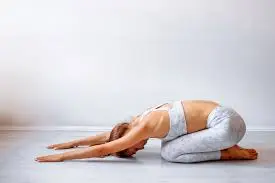
Child’s Pose, also known as Balasana in yoga, is a mild resting position that eases tension and promotes relaxation while stretching the legs, ankles, hips, and back. This pose, which is done by kneeling on the floor, dropping the forehead to the floor, stretching the arms forward, and leaning back on the heels, promotes deep breathing and relaxes the nervous system. It’s a fantastic complement to any yoga or workout cooldown because it’s perfect for releasing tension in the neck and lower back. All fitness levels can benefit from Child’s Pose, which is a grounding pose that helps the body and mind heal.
Standing Toe Touch:
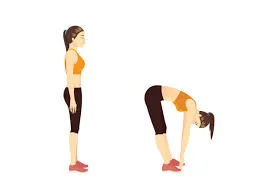
A straightforward yet powerful flexibility exercise that works the hamstrings, calves, and lower back is the standing toe touch. By stretching the spine, this exercise also strengthens the core and improves posture. Standing toe touches are a convenient addition to any at-home workout or daily stretching session because they can be performed anywhere without the need for equipment and are frequently used in warm-up or cool-down routines.
Inchworm Stretch:
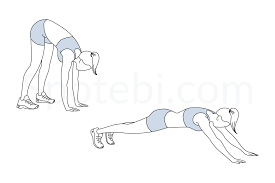
A dynamic full-body exercise that enhances strength, flexibility, and warm-up benefits is the Inchworm Stretch. Starting from a standing position, you bend forward to touch the floor, then you walk your hands forward to form a plank, and finally, you walk your feet toward your hands to stand back up. This stretch encourages mobility and muscular activation while targeting the hamstrings, calves, shoulders, chest, and core. The Inchworm Stretch is a great way to get the body ready for exercise since it increases flexibility, circulates blood, and works important muscle groups. It is also a great supplement to dynamic stretching sessions or warm-up exercises.
Calf Raises:
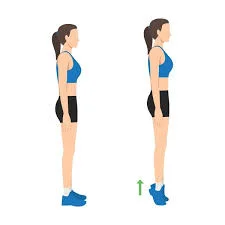
This exercise tones and strengthens the calves, increases ankle stability, and improves lower leg endurance. Walking, sprinting, jumping, and balance can all be improved by calf raises. People of all fitness levels may incorporate them into their at-home workout regimens because they are low-impact, equipment-free, and portable.
Cycling:
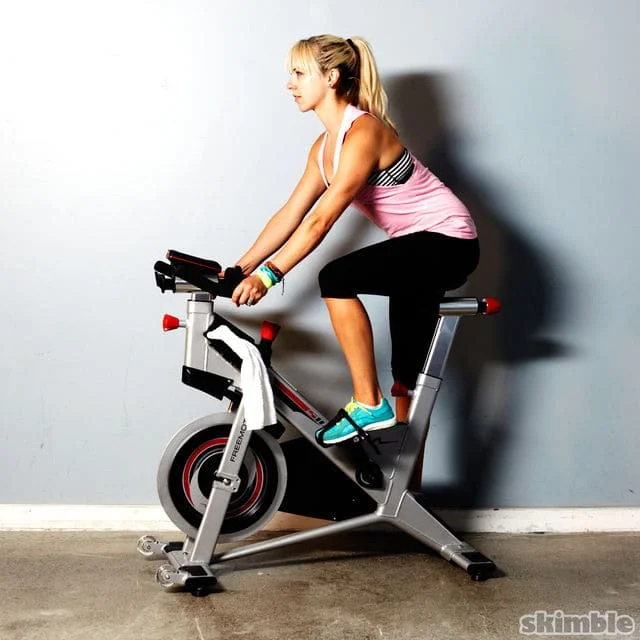
Cycling, whether done on a stationary bike or outdoors, is a low-impact aerobic exercise that has several health advantages. It increases endurance, strengthens the muscles in the legs and lower body, and improves cardiovascular fitness. By increasing metabolism and burning calories, cycling also aids in weight loss. For people of all ages, it’s the perfect workout because it’s easy on the joints. Cycling can also improve mental health, lower stress levels, and improve mood. Cycling is an enjoyable, efficient, and eco-friendly way to maintain your health, whether you use it as a daily workout or as a form of transportation.
Seated Forward Bend:
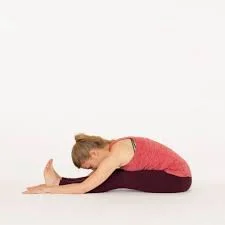
This position, which is performed by sitting with the legs straight out in front of you and bending forward from the hips, increases body flexibility and releases stress. It is perfect for morning routines because it also soothes the mind. Maintaining the stretch promotes deep breathing, which lowers stress and enhances concentration all day long.
Standing Quad Stretch:
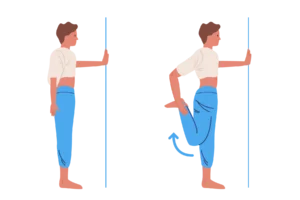
It enhances posture, flexibility, and balance. It is performed by standing on one leg and drawing the opposing foot toward the glutes. This stretch is very helpful for warming up the legs before a workout and helps release muscle tension after sleep or activity.
Knee-to-Chest Stretch:
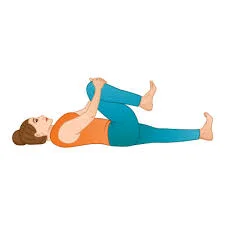
It increases flexibility and relieves lumbar spine strain when you lie on your back and draw one or both knees toward your chest. Because it helps spinal alignment, eases tense muscles from sleep, and encourages relaxation, this stretch is particularly helpful in the morning. Additionally, it can help improve general mobility and lessen lower back pain.
Hamstring Stretch:
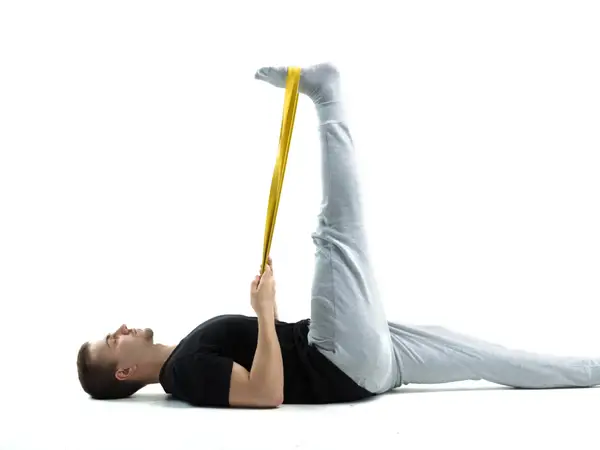
You can do it standing, sitting, or lying down by reaching out with one leg and lightly touching the toes. This stretch relieves tension, increases flexibility, and helps avoid injuries, particularly in the legs and lower back. By including hamstring stretches in your morning routine, you may improve circulation, expand your range of motion, and prime your body for physical activity all day long.
Cobra Stretch:
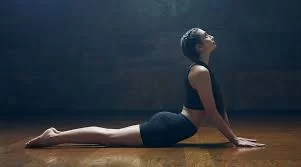
The spine, chest, and abdominal muscles are the main focus of the restorative yoga pose known as the “Cobra Stretch.” It helps with posture and spinal flexibility. This stretch relieves stiffness from extended sitting or sleeping, strengthens the lower back, and opens up the chest. By opening up the lungs, the Cobra Stretch can help improve breathing, release stress, and revitalize the body in the morning.
Conclusion:
One of the most effective ways to start your day with energy, focus, and happiness is to do a regular morning workout at home. It improves mental and physical health and establishes a constructive tone for the remainder of the day.
Even a little morning workout, whether it be yoga, bodyweight training, or a fast stretch, can have long-term fitness advantages. Maintaining this regimen from the comfort of your own home fosters discipline, enhances general wellness, and supports an active, healthy lifestyle.
FAQs
Yoga, squats, push-ups, jumping jacks, and running or walking are all good early workouts. These workouts have several advantages, such as strengthening the heart, increasing flexibility, and lowering stress levels.
For the best recuperation and injury prevention, the majority of fitness experts advise taking one to three days off each week. The precise amount varies depending on personal preferences, activity intensity, and fitness level.
In particular, if you’re going for moderate-intensity activity, walking can be sufficient to maintain or enhance your health. It’s a low-impact workout with several advantages, such as stronger bones and muscles, better mood, and better cardiovascular health. Walking is healthy for you, no matter how much you do, but it’s a good idea to aim for at least 30 minutes of brisk walking most days of the week.
Bananas are a great pre- or post-workout snack because of their high potassium, fiber, and antioxidant content, which can also help with digestion, heart health, and long-lasting energy. Knowing the advantages of bananas might help you choose foods that will help you reach your fitness objectives.
It depends on some things, including your level of fitness, the intensity of your workouts, and your capacity for proper recovery, but in general, doing out twice a day is safe. Experienced individuals should put relaxation, diet, and listening to their bodies first, while beginners should avoid doing twice as much exercise and build their activity levels gradually.
Although the “best” time to work out varies depending on personal tastes and objectives, morning workouts can help with weight management and routine development. Workouts in the afternoon and evening, however, might be beneficial for building muscle and lowering tension. In the end, the best time is when you are most likely to work out regularly.
Small, simple steps, like getting up at the same time every day, drinking water, and doing some moderate stretching or exercise, are a good place to start when establishing a morning routine. Add in other pursuits that support your objectives gradually, such as journaling, mindfulness, or making a nutritious breakfast.
References:
- Cscs, D. P. R. (2024, September 2). Workout Routines for Men: The Ultimate Guide. Healthline. https://www.healthline.com/nutrition/workout-routine-for-men
- Place, H. (2018b, May 18). Early morning workout. Holmes Place Corporate. https://www.holmesplace.com/en/en/blog/fitness/early-morning-workout
- Taneja, A. (2024, June 25). 9 Morning exercises for men to kickstart your day with a bang. Diabetes Blog – Get Expert Advice on Diabetes Control & Wellness at BeatO. https://www.beatoapp.com/blog/quick-morning-exercises-for-men-how-to-do/
- Cotman, A. (2025, May 24). Early morning workouts: 6 exercises to start your day. Red Bull. https://www.redbull.com/in-en/early-morning-workout-best-exercises
- Attwood, R., & Attwood, R. (2024, September 17). Simple Morning Workout for Men – 15-Minute No-Equipment Routine. Beard Beasts. https://www.beardbeasts.com/blogs/news/simple-morning-workout-for-men-15-minute-no-equipment-routine?srsltid=AfmBOorcV_XyWJjHhZFzwT-FnVgfyAVwmgMWPTRqx8s63TydZP9xvRjw
- Chowdhury, A. (2024a, June 26). Top 8 Morning exercise for men – 5-5-5-30 workout routine and benefits. Healthy Foods for Weight Loss to Add in Your Diet | ToneOpFit. https://toneopfit.com/blogs/morning-exercise-for-men
